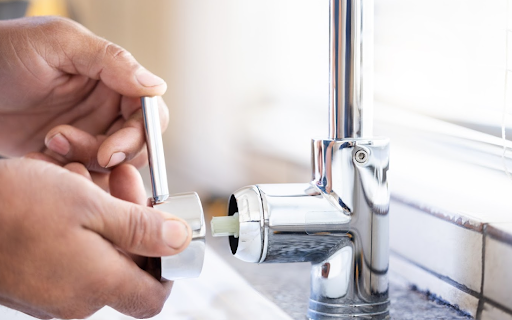With water shortages becoming more common, using water efficiently in your home is important. One of the best ways to do this is by upgrading your plumbing fixtures and appliances to more efficient models. This can help reduce your water usage and save you money on utility bills.
If you don’t know where to start, here are some ways to upgrade your plumbing and increase water efficiency in your home:
1. Start With A Water Audit
Before you seek professionals or service providers similar to AI Coronado Plumbing for your upgrade needs, the first step is to conduct a water audit. It lays the groundwork for all future improvements. Here’s what to focus on:
Inspect All Water Outlets:
Check every faucet, showerhead, and hose bib for leaks and drips. Even a small leak can waste gallons of water over time.
Evaluate Appliance Usage:
Assess how much water your dishwasher and washing machine use. Older models often consume more water than necessary.
Toilet Leak Test:
Place a few drops of food coloring in your toilet tank. If the color appears in the bowl without flushing, you have a leak.
Review Your Water Bill:
Compare your current water usage with past bills to identify any unusual increases, which could signal hidden leaks.
Professional Assessment:
Consider hiring a professional to conduct a more detailed audit. They can offer insights into areas you might overlook.
By methodically examining these areas, you’ll identify key opportunities to enhance your home’s water efficiency. This audit isn’t just a checklist; it’s the foundation of your water-saving strategy.
2. Seek Professional Advice
When in doubt, seek professional plumbing services. A plumber can provide valuable insights into the most effective upgrades for your specific situation and help you navigate the installation process. So, if you’re confused about various upgrade options, get expert advice to make a smart choice.
3. Choose High-Efficiency Fixtures
Once you’ve identified the problem areas, it’s time to switch to high-efficiency fixtures, which can be a powerful move in your water-saving journey. The following innovative fixtures are designed with efficiency in mind, using less water per minute without compromising on your daily water needs. Here’s a closer look:
Low-Flow Showerheads:
These showerheads are engineered to provide a satisfying shower experience while reducing water flow. They often come with adjustable settings, allowing you to customize your shower while saving water.
Efficient Faucets:
By incorporating aerators, efficient faucets reduce water flow but maintain pressure, giving you the feel of a regular faucet while using less water.
Modern Toilets:
Upgrading to a modern, efficient toilet can make a big difference. Dual-flush toilets, for instance, offer two flush settings – one for liquid waste and another for solid waste, providing significant water savings over traditional toilets.
By installing these fixtures, you’re conserving water and improving your home’s sustainability.
4. Upgrade To Energy-Efficient Appliances
Your washing machine and dishwasher play a significant role in your home’s overall water consumption. Upgrading to energy-efficient models can cut down your water usage dramatically. These appliances are better for the environment and gentler on your wallet in the long run. Here are a few points to consider:
Look For Energy Star Rated Models:
Appliances with an Energy Star rating are designed to use less water and energy. They meet the strict efficiency guidelines set by the U.S. Environmental Protection Agency and the U.S. Department of Energy.
Check For Advanced Features:
Modern energy-efficient appliances have features like dishwasher soil sensors and multiple water level settings in washing machines. These features adjust the water usage based on the load, leading to significant savings.
Consider Long-Term Savings:
While energy-efficient appliances might have a higher upfront cost, such units offer long-term savings on utility bills. Over time, the reduction in water and energy use can offset the initial investment.
By focusing on energy efficiency when selecting new appliances, you’re making a wise investment in your home and the planet.

5. Consider A Tankless Water Heater
In addition to appliances, you can also increase efficiency with your water heating. But before you install one, did you know that your water heater can be a major energy hog? This is why switching to a tankless model can be a game changer. These heaters provide hot water on demand, meaning they only use energy when you need hot water. It can lead to significant savings in both water and energy.
6. Harvest Rainwater
Installing rain barrels or a rainwater capture system allows you to harvest rain and put it to use in your home and yard. Typical systems store and divert rainwater for uses like watering plants and gardens. Some systems filter rainwater for use indoors in toilets and laundry machines. This provides an entirely new source of water to offset using city water.
Check with your local utility for rebates, credits, or other incentives for installing a rainwater harvesting system. While a larger system requires a significant investment, it also provides greater water savings. Even installing a simple rain barrel can help conserve water by capturing rain for garden irrigation.
Conclusion
Upgrading your home plumbing can be a win-win situation. You’ll be doing your part for the environment while enjoying lower utility bills. Remember, every small step counts in the journey towards a more sustainable and efficient home.

